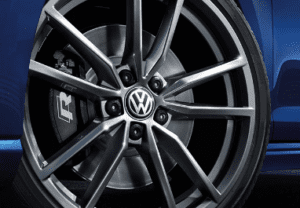Volkswagen Wheels and Tyres Guide

The wheels and tires guide for Volkswagen vehicles can vary based on the specific model and year. However, I can provide you with some general information that you might find helpful. Keep in mind that you should always refer to the owner’s manual or contact your Volkswagen dealership for model-specific details.
Wheels:
- Wheel Size:
- Volkswagen vehicles come with a variety of wheel sizes. The size is often expressed in inches (e.g., 16 inches, 17 inches, etc.). You can find the recommended wheel size for your specific model in the owner’s manual or on the driver’s side door jamb.
- Bolt Pattern:
- The bolt pattern is the number of lug nuts and the diameter of the circle they form. It’s crucial to know the correct bolt pattern if you’re considering aftermarket wheels.
- Offset:
- Offset is the distance from the centerline of the wheel to its mounting surface. It influences how the wheel fits within the wheel well. Original equipment wheels have a specific offset, and changing it can affect handling.
- Material and Finish:
- Volkswagen wheels are typically made of aluminum alloy, and the finish can vary (painted, polished, or machined). Ensure that any aftermarket wheels you choose meet the manufacturer’s specifications.
Tires:
- Tire Size:
- The correct tire size for your Volkswagen is specified in the owner’s manual and often on a label inside the driver’s side door jamb. It includes information such as tire width, aspect ratio, and diameter.
- Load Index and Speed Rating:
- Each tire has a load index and speed rating. The load index indicates the maximum weight the tire can support, and the speed rating indicates the maximum speed the tire is designed for. Make sure the replacement tires meet or exceed the specifications outlined by Volkswagen.
- Tire Type:
- Different Volkswagen models may come with various types of tires, such as all-season, summer, or performance tires. The type of tire can impact the vehicle’s performance and handling.
- Inflation Pressure:
- The recommended tire inflation pressure can be found in the owner’s manual or on a label inside the driver’s side door jamb. It’s important to regularly check and maintain proper tire pressure for safety and fuel efficiency.
- Tire Rotation:
- Regular tire rotation is essential for even tread wear. Refer to the owner’s manual for the recommended tire rotation intervals.
Always consult your owner’s manual or Volkswagen dealership for the most accurate and model-specific information. If you’re considering aftermarket wheels or tires, ensure they meet Volkswagen’s specifications to maintain safety and performance.

